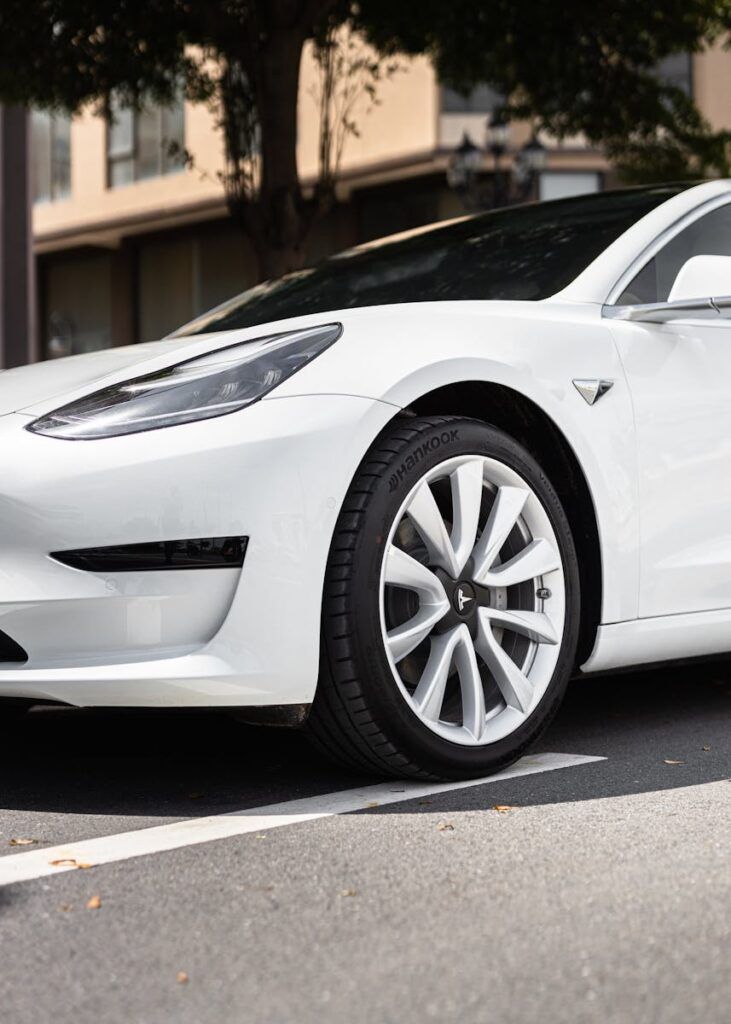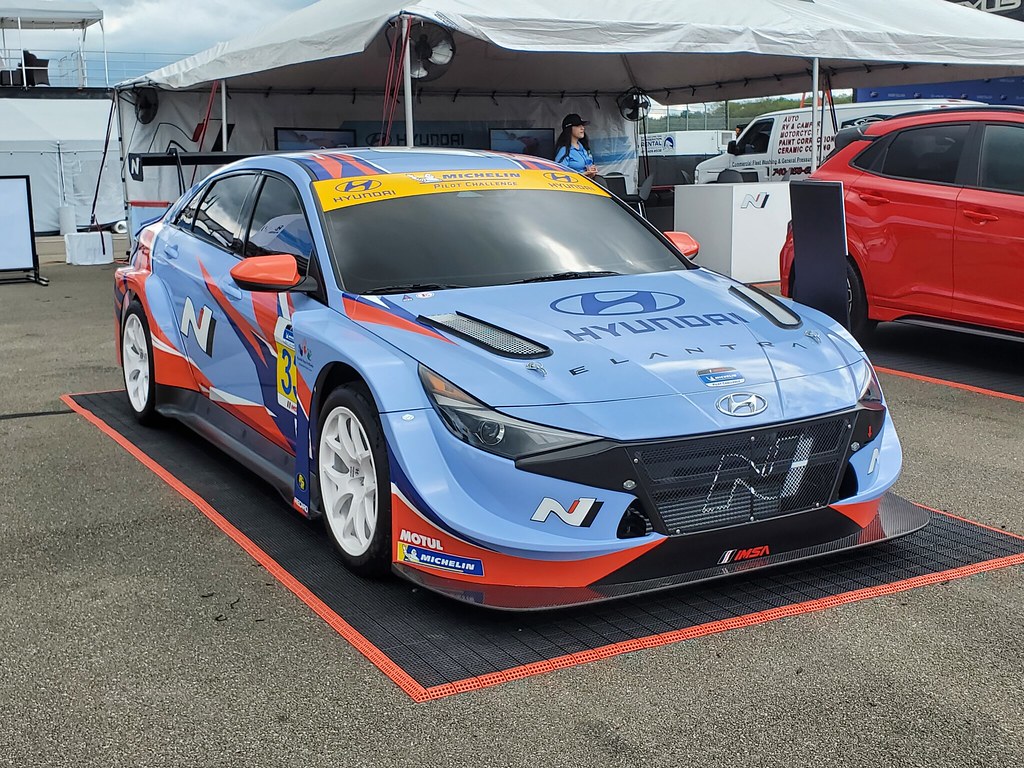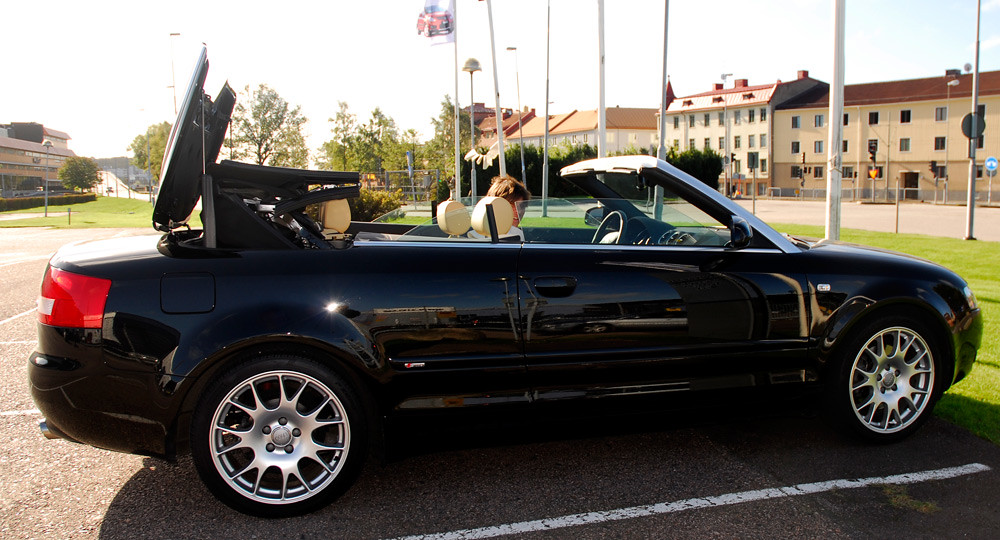
Alright, petrolheads, buckle up! In a world teeming with automotive releases, some simply vanish without a trace, while others hit the road with all the fanfare of a damp firecracker. But then, *then* there are those truly magnificent machines that swagger onto the scene, not just defying expectations, but absolutely pulverizing them into a glorious cloud of tire smoke and bewildered critics! These aren’t just cars; they’re legends, titans of the tarmac that rewrote the rulebook and left everyone wondering how they ever doubted them.
We’re talking about vehicles that arrived with a whisper, perhaps even a chuckle from the industry, only to roar into the hearts of drivers worldwide. They showcased innovation, delivered exhilarating performance, or offered a practicality so profound it reshaped entire market segments. These are the unsung heroes, the underdog champions, the ones that proved that sometimes, the greatest triumphs come from the most unexpected corners of the automotive universe.
So, join us on a high-octane journey as we celebrate the first half of these incredible machines – the pioneers, the rebels, the astonishing releases that were so much better than anyone, and we mean *anyone*, ever anticipated. Get ready to have your perceptions of automotive greatness completely reset, because these seven beauties are about to show you how it’s really done!

1. **Mazda MX-5 Miata (1989)**Imagine a world where affordable, pure-driving convertibles were considered a relic, a fond memory from a bygone era. Many in the industry believed that segment was dead. Then, Mazda, with a stroke of genius, introduced the MX-5 Miata in 1989, and suddenly, everything changed. Critics and enthusiasts alike, who thought the segment was long gone, were left utterly dumbfounded by this little roadster’s sheer brilliance.
It wasn’t about monstrous horsepower or space-age technology; it was about the sublime. The Miata arrived with ‘sleek curves and balanced handling,’ a design philosophy that prioritized driver engagement above all else. Its lightweight chassis and perfectly tuned suspension made every twist and turn of the road an absolute delight, reminding everyone that driving joy didn’t need a six-figure price tag. It just needed a well-engineered, lightweight chassis and a driver with a smile on their face.
This unassuming little car became a ‘surprise bestseller,’ quickly proving that ‘simplicity sells.’ By 2000, the Guinness Book of World Records officially recognized the MX-5 as the ‘best-selling two-seat sports car in history.’ That’s not just a win; that’s a mic drop from a vehicle that everyone thought was merely a niche play. It redefined what a sports car could be for the everyday driver, a connection to the road that few could match.
Car Model Information: 2025 Audi Q7 55 Premium Plus
Name: Mazda MX-5
Manufacturer: Mazda
Aka: unbulleted indent list
Production: 1989–present
Assembly: Hiroshima
Class: Roadster (car),sports car
Layout: unbulleted indent list
Platform: List of Mazda model codes#Model codes
Categories: 1990s cars, 2000s cars, 2010s cars, 2020s cars, All Wikipedia articles in need of updating
Summary: The Mazda MX-5 is a lightweight two-seat sports car manufactured and marketed by Mazda. In Japan, it is marketed as the Mazda Roadster or, previously, as the Eunos Roadster. In the United States it is sold as the Mazda Miata (), and it was formerly marketed under the same name in Canada. The name miata derives from Old High German for “reward”.
Produced at Mazda’s Hiroshima plant, the MX-5 debuted in 1989 at the Chicago Auto Show. It was created under the design credo Jinba ittai, meaning “unity of horse and rider”. Noted for its small, light, balanced and minimalist design, the MX-5 has often been described as a successor to the 1950s and 1960s Italian and British roadsters, with the Lotus Elan serving as a design benchmark.
Each generation is identified by a two-letter code, beginning with the first generation NA. The second generation NB launched in 1998, followed by the third generation NC in 2005, and the fourth generation ND in 2015.
More than one million MX-5s have been sold, making it the best-selling two-seat convertible sports car in history.
Get more information about: Mazda MX-5
Buying a high-performing used car >>>
Brand: Mazda Model: MX-5 Miata
Price: $55,675 Mileage: 20,490 mi.
Read more about: These 16 Iconic Cars Completely Revolutionized The Industry

2. **Jaguar E-Type (1961)**Now, prepare yourselves for a true automotive legend, a machine so utterly captivating it redefined beauty and performance the moment it debuted. When Jaguar unveiled the E-Type in 1961, the company itself had ‘expected modest success.’ Oh, what a delightful understatement that turned out to be! The E-Type didn’t just grace the stage; it descended like a celestial body, instantly and irrevocably stunning ‘the automotive world’ and leaving an indelible mark on design history.
From every angle, the E-Type was a masterpiece. Its ‘gorgeous curves and thrilling performance’ weren’t just features; they were a declaration. This was a car that looked fast standing still, a sculptural marvel of chrome and steel that spoke volumes about power and elegance. The legend even goes that ‘Enzo Ferrari reportedly called it ‘the most beautiful car ever made’,’ a compliment of the highest order from a man who knew a thing or two about stunning vehicles.
The E-Type wasn’t merely a success; it was an ‘unexpected superstar’ that ‘transformed Jaguar’s reputation overnight, becoming legendary.’ It became the definitive symbol of ‘British engineering defined automotive elegance worldwide.’ For a company expecting a quiet success, the E-Type delivered an earthquake, etching its silhouette into the annals of history as one of the most iconic and beloved cars ever conceived.
Car Model Information: 1962 Jaguar E-Type XKE
Sp: uk
Name: Jaguar E-Type
Caption: 1961 E-Type Series 1 3.8-Litre, the first production model of this open two-seater
Aka: Jaguar XK-E (North America),Jaguar V-12
Manufacturer: Jaguar Cars
Production: 1961–1974
Class: Sports car
Predecessor: Jaguar XK150
Related: Jaguar D-Type,Jaguar XJ13
Successor: Jaguar XJS
Layout: FMR layout
Assembly: Coventry,England
Designer: Malcolm Sayer
Categories: 1970s cars, 2+2 coupés, All Wikipedia articles written in British English, All articles with dead external links, All articles with specifically marked weasel-worded phrases
Summary: The Jaguar E-Type, or the Jaguar XK-E for the North American market, is a British front mid-engined sports car that was manufactured by Jaguar Cars Ltd from 1961 to 1974. Its sleek appearance, advanced technologies, high performance, and competitive pricing established it as an icon. The E-Type’s claimed 150 miles per hour (240 km/h) top speed, sub-7-second 0 to 60 mph (97 km/h) acceleration, largely unitary body construction, front and rear independent suspension with disc brakes, mounted inboard at the rear, and rack-and-pinion steering spurred industry-wide changes.
The E-Type was based on Jaguar’s D-Type racing car, which had won the 24 Hours of Le Mans for three consecutive years beginning in 1955.
The E-Type employed what was, for the early 1960s, a novel design principle, with a front subframe carrying the engine, front suspension and front bodywork bolted directly to the body tub. No ladder frame chassis, as was common at the time, was needed and as such the first cars weighed only 1,315 kg (2,899 lb).
It is rumored that, on its debut on 15 March 1961, Enzo Ferrari called it “the most beautiful car ever made”, but this statement is not fully confirmed. In 2004, Sports Car International magazine placed the E-Type at number one on their list of Top Sports Cars of the 1960s. In March 2008, the Jaguar E-Type ranked first in The Daily Telegraph’s online list of the world’s “100 most beautiful cars” of all time.
Get more information about: Jaguar E-Type
Buying a high-performing used car >>>
Brand: Jaguar Model: E-Type
Price: $269,900 Mileage: 76,725 mi.
Read more about: Everyone Wants These 14 Classic Cars In Their Garage: A Deep Dive for Enthusiasts

3. **AMC Eagle (1980)**Let’s take a trip back to 1980, an era where the concept of a ‘crossover’ was a distant, almost alien idea. Most vehicles fit neatly into defined boxes: sedans, wagons, or rugged, truck-based SUVs. Then, American Motors Corporation, never one to shy away from the unconventional, boldly introduced the AMC Eagle. This was a vehicle that, in its day, prompted more than a few ‘critics raised eyebrows’ at its very concept of ‘blending car comfort with SUV capabilities.’
This peculiar machine had a secret weapon: it resonated with people who needed both. The Eagle, despite its initial oddball status, ‘won hearts through versatility and surprising reliability.’ It offered the comfortable ride and familiar driving dynamics of a car, combined with the all-weather capability and higher stance of an SUV. It was perfect for those who faced rough winters or gravel roads but didn’t want the truck-like compromises of traditional 4x4s.
This ‘unexpectedly popular’ ‘oddball vehicle pioneered today’s crossover craze,’ a segment that would eventually dominate the global automotive market. The Eagle proved that there was a massive, untapped demand for vehicles that blurred the lines between segments. Its success demonstrated conclusively that ‘AMC’s gamble was decades ahead of its time,’ cementing its place not just as a cult classic, but as a visionary predecessor to an entire class of vehicles.
Read more about: Were the Editors Asleep? 12 Jaw-Dropping Film Fails That Sneaked Onto the Big Screen, From Ancient Rome to a Galaxy Far, Far Away!

4. **Mazda RX-7 FD (1992)**Prepare yourselves for a masterclass in unconventional brilliance – the Mazda RX-7 FD. For years, the rotary engine had been a source of fascination and frustration, its unique characteristics often leading to whispers of skepticism about its long-term viability. Many in the automotive world felt that ‘few believed Mazda’s rotary engine could thrive’ beyond a niche application. But then, in 1992, the third-generation RX-7, known as the FD, burst onto the scene, and those whispers turned into gasps of admiration.
This was a car that didn’t just embrace its rotary heart; it celebrated it, wrapping it in a body of breathtaking beauty and endowing it with handling dynamics that were nothing short of sublime. The RX-7 FD arrived with ‘sleek and razor-sharp handling,’ a chassis so perfectly balanced it felt like an extension of the driver’s own thoughts. Every input, every corner, every acceleration was a visceral thrill, proving that the rotary could not only thrive but excel.
Far ‘surpassing Mazda’s own hopes,’ this phenomenal machine ‘became a 1990s performance icon.’ It wasn’t just another sports car; it was a statement, a bold declaration of Mazda’s engineering prowess and willingness to innovate. The RX-7 FD didn’t just carve out a segment; it ‘redefined Japanese sports cars for generations,’ inspiring a legion of enthusiasts and cementing the rotary engine’s place in the pantheon of automotive greatness.
Car Model Information: 1989 Mazda RX-7
Name: Mazda RX-7
Caption: 1994 Mazda RX-7 R2 (FD3S)
Manufacturer: Mazda
Aka: Mazda Savanna RX-7 (Japan, 1978–1991),Mazda ɛ̃fini RX-7 (Japan, 1991–1997)
Class: Sports car
Production: 1978–2002,811,634 produced
Assembly: Hiroshima
Platform: Mazda F platform
Layout: Front-engine, rear-wheel-drive layout#Front mid-engine, rear-wheel-drive layout
Predecessor: Mazda RX-3
Successor: Mazda RX-8
Categories: 1980s cars, 1990s cars, 2000s cars, 24 Hours of Le Mans race cars, All Wikipedia articles written in British English
Summary: The Mazda RX-7 is a sports car which was manufactured and marketed by Mazda from 1978 to 2002 across three generations. It has a front mid engine, rear-wheel-drive layout and uses a compact and lightweight Wankel rotary engine.
The first-generation RX-7, codenamed SA (early) and FB (late), is a two-seater coupé with a rear hatchback. It featured a 12A carbureted rotary engine as well as the option for a 13B rotary engine with electronic fuel injection in later years. The second-generation RX-7, carrying the internal model code FC, was offered as a two-seater coupé with a 2+2 option available in some markets, as well as in a convertible body style. This was powered by the 13B rotary engine, offered in naturally aspirated or turbocharged forms. The third-generation RX-7, model code FD, was offered as a two-seater coupé with a 2+2 version offered as an option for the Japanese market. It featured a sequentially turbocharged 13B REW engine.
More than 800,000 RX-7s were manufactured over its lifetime.
Get more information about: Mazda RX-7
Buying a high-performing used car >>>
Brand: Mazda Model: RX-7
Price: $14,998 Mileage: 88,741 mi.
Read more about: Timeless Legends: 15 Classic Cars from the 60s and 70s That Deserve a Modern MotorTrend Revival.

5. **Chrysler PT Cruiser (2000)**Let’s cast our minds back to the dawn of the new millennium. Then, in 2000, Chrysler unveiled something truly unexpected: the PT Cruiser. With its ‘retro styling inspired by the 1930s legends,’ it stood out like a charming anachronism. Many observers, including a fair share of critics, initially found that it ‘looked more quirky than promising,’ unsure if there was a real market for such a distinctive, throwback design.
However, the PT Cruiser possessed an undeniable charisma, a playful personality that transcended its initial polarizing appearance. Buyers weren’t just intrigued by its looks; they ‘loved its charm and roomy cabin,’ which offered remarkable versatility for its size. It cleverly blended the cool factor of a custom hot rod with the utility of a small wagon, making it surprisingly adaptable for various needs.
Chrysler’s ‘odd throwback design was cool,’ and the public responded with overwhelming enthusiasm, leading to sales figures that were far from modest. The PT Cruiser went on to shatter all expectations, ‘exceeding all sales expectations’ by a considerable margin. By the end of its production in 2010, an astounding ‘1.35 million units were produced.’ This astonishing success proved that sometimes, daring to be different can lead to monumental triumph.
Car Model Information: 2025 Audi Q7 55 Premium Plus
Name: Chrysler PT Cruiser
Manufacturer: Chrysler
ModelCode: PT,PG
Production: 2000–2010
ModelYears: 2001–2010
Assembly: Toluca, Mexico State
Designer: Bryan Nesbitt
Class: Compact car
BodyStyle: convertible
Platform: Chrysler PT platform
Related: Dodge SRT4,Dodge Neon
Predecessor: Dodge Neon
Successor: Lancia Delta#Third generation
Layout: Front-engine, front-wheel-drive layout
Engine: ubl
Transmission: Ultradrive#40TE
Wheelbase: 103 in
Abbr: on
Length: 168.8 in
Width: 67.1 in
Height: 63 in
Weight: 3123 lb
Categories: 2010s cars, All articles with unsourced statements, Articles with short description, Articles with unsourced statements from March 2018, Cars discontinued in 2010
Summary: The Chrysler PT Cruiser is a compact car that was built by the American company Chrysler from 2001 until 2010. Introduced as a five-door hatchback wagon, a two-door convertible variant was also made from 2005 until 2008.
Originally planned as a Plymouth model, the PT Cruiser was ultimately marketed as a Chrysler when Plymouth was discontinued. Intended to invoke 1930s aesthetics, the exterior of the PT Cruiser was designed by Bryan Nesbitt. The model received an intermediate facelift for the 2006 model year. Interior packaging was noted for its high roof, high h-point seating, and flexible cargo and passenger configurations enabled by a multi-level rear cargo shelf and rear seats a user could fold, tumble, or remove.
The PT Cruiser was produced in Mexico and Austria at the Toluca Car Assembly and Eurostar Automobilwerk factories respectively. By the end of production in July 2010, worldwide production had reached 1.35 million.
In its nameplate, PT stands for “Personal Transport” or “Personal Transportation.” PT was the PT Cruiser’s product code for the Mexican-made units.
Get more information about: Chrysler PT Cruiser
Buying a high-performing used car >>>
Brand: Chrysler Model: PT Cruiser
Price: $55,675 Mileage: 20,490 mi.
Read more about: Buyer Beware: 15 Sedans That Won’t Make it to 80,000 Miles Without Costly Repairs

6. **Chevrolet Corvette C4 (1983)**After a dramatic pause, having ‘skipping a model year entirely’ for 1983, Chevrolet brought back America’s most iconic sports car with an intensity that bordered on a full-blown revolution. The all-new Corvette C4 arrived in 1983, not just as a new model, but as a statement, and it did so under the ‘intense scrutiny’ of a demanding public and a watchful automotive press. Could Chevy really pull off a worthy successor after such a hiatus? The answer, as it turned out, was a resounding ‘yes.’
This was no mere facelift; it was a complete and ‘radical redesign,’ a modern reimagining of the Corvette ethos. The C4 embraced technology with a fervor, integrating a futuristic digital dashboard and a sophisticated chassis that promised a level of precision handling unseen in previous generations. These ‘high-tech features surprised critics and reignited enthusiasm’ in a way that few could have anticipated, instantly establishing the C4 as a legitimate challenger.
The impact of the C4 was immediate and profound, as it ‘far exceeded expectations.’ It didn’t just revitalize ‘America’s iconic sports car’; it fundamentally reset its trajectory, ‘paving the way for Corvette’s future as a global performance benchmark.’ The C4 proved that the Corvette could not only adapt to changing times but lead the charge, asserting its relevance and capability on the world stage.
Car Model Information: 2025 Audi Q7 55 Premium Plus
Name: Chevrolet Corvette (C4)
Caption: 1994 Chevrolet Corvette
Manufacturer: Chevrolet
Production: January 3, 1983 – June 20, 1996
ModelYears: 1984–1996
Predecessor: Chevrolet Corvette (C3)
Successor: Chevrolet Corvette (C5)
Class: Sports car
Assembly: Bowling Green, Kentucky
BodyStyle: targa top,Convertible (car)
Layout: Front-engine, rear-wheel-drive layout#FMR
Platform: GM Y platform
Wheelbase: cvt
Length: cvt
Width: cvt
Height: Coupe: {{cvt,46.7,in,mm
Transmission: automatic transmission,Overdrive (mechanics),GM 4L60-E transmission,ZF Friedrichshafen
Engine: {{cvt,350,cuin,L,1,Chevrolet small-block engine (first- and second-generation)#L83
Weight: cvt
Designer: Jerry Palmer
Related: Callaway Cars#C4 (RPO B2K Callaway Twin Turbo Corvette),Callaway Cars#C4 (RPO B2K Callaway Twin Turbo Corvette),Callaway Cars#C4 (RPO B2K Callaway Twin Turbo Corvette),Callaway Cars#C6 (Callaway SuperNatural Corvette),Callaway Cars#C4 (RPO B2K Callaway Twin Turbo Corvette)
Categories: 1990s cars, All articles with dead external links, All articles with unsourced statements, Articles with dead external links from November 2016, Articles with permanently dead external links
Summary: The Chevrolet Corvette (C4) is the fourth generation of the Corvette sports car, produced by American automobile manufacturer Chevrolet from 1983 until 1996. The convertible returned, as did higher performance engines, exemplified by the 375 hp (280 kW) LT5 found in the ZR1. In early March 1990, the ZR1 would set new records for the highest average speed over 24 hours at over 175 mph (282 km/h) and highest average speed over 5,000 miles at over 173 mph (278 km/h). With a completely new chassis, modern sleeker styling, and other improvements to the model, prices rose and sales declined. The last C4 was produced on June 20, 1996.
Get more information about: Chevrolet Corvette (C4)
Buying a high-performing used car >>>
Brand: Chevrolet Model: Corvette C4
Price: $55,675 Mileage: 20,490 mi.
Read more about: The Zenith of Chrome and Power: 15 Legendary Cars That Defined the 1950s Automotive Golden Era

7. **Nissan Juke (2010)**And now, let’s wrap up this first electrifying section with a car that truly embodied the spirit of ‘love it or hate it,’ a vehicle so bold it dared to laugh in the face of conventional design. When the Nissan Juke first roared onto the scene in 2010, the immediate reaction from many was, well, a mixture of bewilderment and amusement. ‘Critics laughed at the Juke’s bizarre styling,’ finding its unconventional, frog-like headlights and coupé-SUV mashup aesthetic quite a departure.
Yet, beneath that polarizing exterior lay a surprisingly competent and genuinely fun-to-drive crossover. Nissan understood that blandness was the true enemy, and the Juke was anything but bland. It was ‘bold and surprisingly fun to drive,’ offering a peppy ride and nimble handling that belied its quirky looks. In a market increasingly saturated with generic, anonymous SUVs, the Juke stood out, not just for its looks, but for its engaging character.
The sales figures were the ultimate vindication. The Nissan Juke went on to defy all the initial skepticism, ‘outperforming every prediction’ by a wide margin. Its unexpected success was a powerful lesson for the entire industry: ‘this oddball proved being different pays off—showing style doesn’t always mean playing it safe.’ The Juke didn’t just find a niche; it created one, demonstrating that taking a huge risk on distinctive design can lead to truly remarkable and unforeseen triumphs.
But hold on to your driving gloves, because our journey through automotive genius is far from over! If you thought the first seven picks redefined what’s possible, then prepare yourselves for another exhilarating lap around the track. We’re about to dive into seven more spectacular machines that, against all odds, crushed expectations and etched their names into the automotive hall of fame. From the revival of forgotten segments to the birth of entirely new genres, these vehicles prove that innovation, daring design, and sheer driving pleasure can come from the most unforeseen places. Get ready to have your mind blown once more!
Car Model Information: 2015 Nissan Juke SV
Name: Nissan Juke
Caption: Nissan Juke (F16)
Manufacturer: Nissan
Production: 2010–present
Class: Subcompact crossover SUV
BodyStyle: Sport utility vehicle
Layout: Front-engine, front-wheel-drive layout,Front-engine, four-wheel-drive layout
Categories: 2020s cars, All-wheel-drive vehicles, All Wikipedia articles written in British English, All articles with unsourced statements, Articles containing Japanese-language text
Summary: The Nissan Juke (Japanese: 日産・ジューク, Hepburn: Nissan Jūku) is a subcompact crossover SUV (B-segment) produced by the Japanese car manufacturer Nissan since 2010. Debuted as a production vehicle at the 2010 Geneva Motor Show in March, it was introduced to North America at the 2010 New York International Auto Show to be sold for the 2011 model year as the smallest crossover in Nissan’s lineup prior to the introduction of the Nissan Magnite in 2020.
The second-generation model was revealed for the European market in September 2019, offering larger dimensions by utilising the newer Renault–Nissan CMF-B platform. The second generation marks the withdrawal of the model from most markets outside Europe and Australasia to make way for the Nissan Kicks.
The name “juke” means to “dance or change directions demonstrating agility”, and is also derived from the word “jukebox”.
Get more information about: Nissan Juke
Buying a high-performing used car >>>
Brand: Nissan Model: Juke
Price: $9,998 Mileage: 59,742 mi.
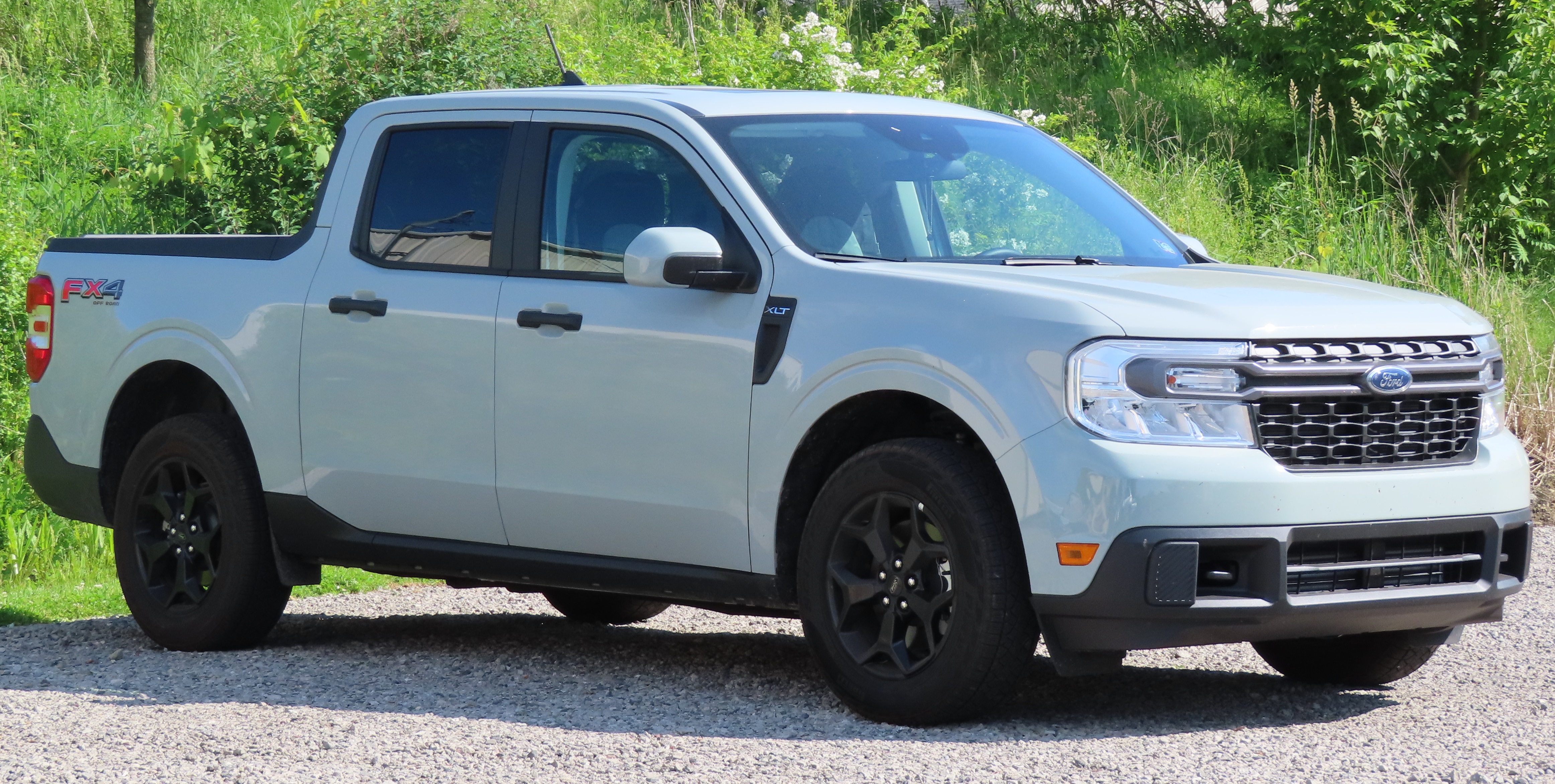
8. **Ford Maverick (2022)**When the automotive world thought it had seen every trick in the book, especially concerning pickups, Ford pulled a fast one with the Maverick in 2022. For years, the compact truck market had been as desolate as a dusty desert highway, with many pundits declaring the segment officially deceased. So, when Ford dared to release a small, affordable pickup, ‘many Americans questioned if compact trucks could sell again.’ The skepticism was palpable, the murmurs of doubt echoing through dealer lots.
But oh, how quickly those doubts turned into cheers! The Maverick didn’t just sell; it ‘soared off dealer lots’ with the kind of unexpected fervor usually reserved for hypercars. What was its secret weapon? A brilliant combination of ‘hybrid efficiency and city-friendly size’ that hit a sweet spot nobody realized was there. This wasn’t just a truck; it was a clever, conscientious urban companion that could handle weekend warrior duties without guzzling fuel or dominating parking spaces.
The Maverick brought a refreshing dose of practicality to a segment that had grown bloated and unwieldy. It tapped into a yearning for utility without the colossal footprint, offering a pickup experience that was genuinely usable for everyday life. Its affordability made it accessible, and its smart design made it indispensable for a new generation of truck buyers who didn’t need to tow a house.
In a glorious twist of fate, the Maverick ‘proved sometimes less is more, even in the pickup-loving country.’ It wasn’t about raw power or massive size; it was about intelligent design meeting real-world needs. Ford took a gamble on a forgotten segment, and in doing so, ‘America rediscovered compact trucks,’ forever changing the landscape of the pickup market. It was a revelation, a triumph of common sense and clever engineering!
Car Model Information: 2025 Ford Maverick XL
Categories: All set index articles, Articles with short description, Ford vehicles, Set index articles on cars, Short description is different from Wikidata
Summary: Ford has marketed the following automobiles models using the Ford Maverick nameplate:
The Ford Maverick (1970–1977), a compact car sold in North America and Brazil during the 1970s
The rebadged Nissan Patrol Y60 sold by Ford Australia under the Button car plan from 1988 to 1994
The rebadged Spanish-built Nissan Terrano II, sold by Ford of Europe from 1993 to 1999
The European and Chinese version of the Ford Escape, sold from 2001 to 2005
The Ford Maverick (2022), a compact pickup truck sold in the Americas
Get more information about: Ford Maverick
Buying a high-performing used car >>>
Brand: Ford Model: Maverick
Price: $30,525 Mileage: 552 mi.
Read more about: You Won’t Believe How These 15 Horror Flicks Fumbled Their Endings
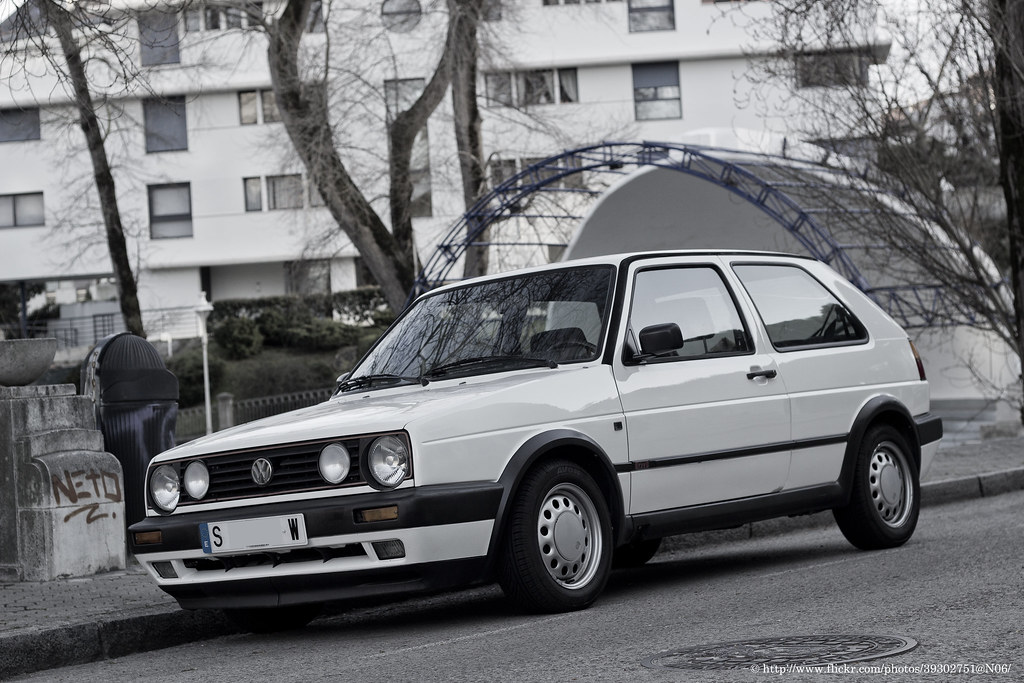
9. **Volkswagen Golf GTI (1976)**Now, let’s talk about a car that literally invented a genre and turned a humble commuter into a legend: the Volkswagen Golf GTI. Back in 1976, when Volkswagen launched the original Golf, it was seen as a perfectly sensible, if somewhat mundane, hatchback. So, when they decided to take that sensible base and inject it with a hearty dose of adrenaline, ‘skeptics rolled their eyes.’ A ‘hot hatch’? What even was that? The idea of a practical family car also being a performance machine seemed utterly preposterous.
But the GTI wasn’t just some marketing gimmick; it was a revelation. It delivered ‘nimble handling and affordable thrills’ in a package that defied expectations. This wasn’t a stripped-down racer; it was a car that you could drive to work during the week and then attack your favorite back roads with on the weekend, all without breaking the bank. It democratized performance, making the joy of driving accessible to the masses.
The magic of the GTI lay in its brilliant balance. It retained all the practicality of the standard Golf – roomy interior, decent boot space, reliable mechanics – but added a layer of exhilarating performance that was addictive. The engine felt zesty, the chassis responsive, and the overall experience was one of pure, unadulterated fun. It was a wolf in sheep’s clothing, a car that offered a genuine connection to the road without any compromise on its everyday usability.
It quickly ‘silenced critics’ and became an instant icon. The GTI didn’t just change VW’s perception; it ‘changed VW’s modest hatch into the definitive hot-hatch phenomenon overnight.’ It showed the world that ‘practical commuters could embrace the fast lane,’ inspiring countless imitators and carving out an entirely new niche in the automotive world. What a triumph of understated brilliance!
Car Model Information: 2025 Audi Q7 55 Premium Plus
Name: Volkswagen Golf
Caption: Volkswagen Golf Mk8
Manufacturer: Volkswagen
Production: 1974–present
Class: Compact car
Predecessor: Volkswagen Beetle
Successor: Volkswagen ID.3
Alt: grey car (hatchback)
Categories: 1980s cars, 1990s cars, 2000s cars, 2010s cars, 2020s cars
Summary: The Volkswagen Golf () is a compact car/small family car (C-segment) produced by the German automotive manufacturer Volkswagen since 1974, marketed worldwide across eight generations, in various body configurations and under various nameplates – including as the Volkswagen Rabbit in the United States and Canada (Mk1 and Mk5), and as the Volkswagen Caribe in Mexico (Mk1).
The original Golf Mk1 was a front-engined, front-wheel drive replacement for the air-cooled, rear-engined, rear-wheel drive Volkswagen Beetle. Historically, the Golf is Volkswagen’s best-selling model and is among the world’s top three best-selling models, with more than 35 million units sold as of 2019.
Initially, most Golfs were hatchbacks, with the three-door version being somewhat more popular than the five-door. Other variants include an estate (Variant, from 1993), convertible (Cabriolet or Cabrio, from 1979), and a Golf-based saloon called the Jetta, Vento (from 1992), or Bora (from 1999). The Golf covers economy to high-performance market segments.
The Golf has won awards, including the World Car of the Year in 2009, with the Mk6 and in 2013 with the Mk7. Along with the Renault Clio and the Vauxhall Astra, the Golf is one of only three cars to have won European Car of the Year twice, in 1992 and 2013. The Golf has made the annual Car and Driver 10Best list multiple times. The Mk7 won the Motor Trend Car of the Year award in 2015, and the Mk1 GTI also won the award in 1985. The Mk4 won for the best-selling car in Europe in 2001.
Get more information about: Volkswagen Golf
Buying a high-performing used car >>>
Brand: Volkswagen Model: Golf GTI
Price: $55,675 Mileage: 20,490 mi.
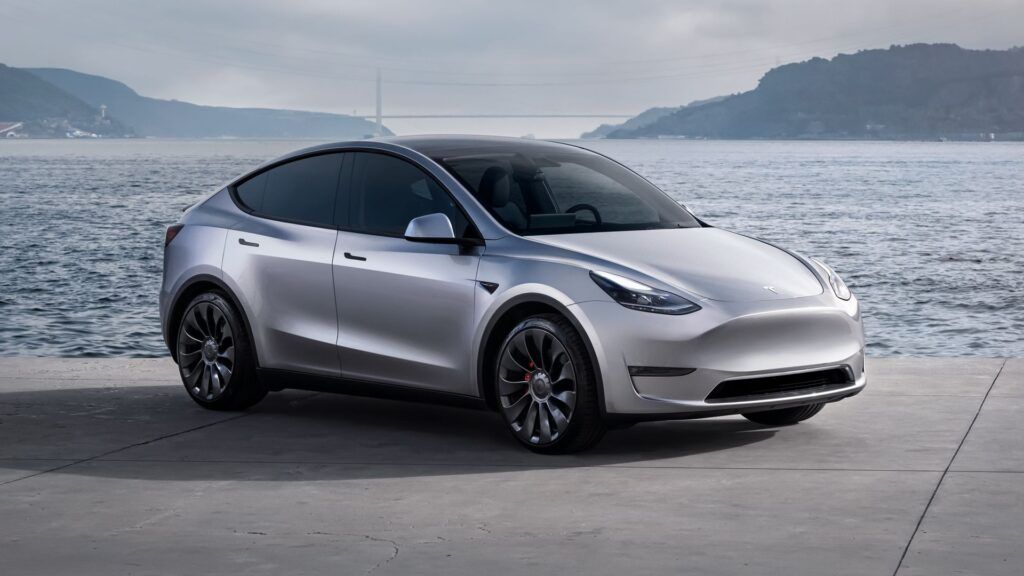
10. **Tesla Model S (2012)**Alright, prepare yourselves for a paradigm shift, a seismic event that reshaped an entire industry. Before 2012, if you mentioned ‘electric car,’ images of golf carts, quirky city runabouts, or perhaps an underwhelming science experiment might have sprung to mind. ‘Electric cars meant compromise—slow, short-range, and boxy,’ a sacrifice made for eco-consciousness. Then, the Tesla Model S arrived, and with it, the future wasn’t just knocking; it was breaking down the door with a roar.
Tesla didn’t just build an electric car; they built a *luxury performance sedan* that happened to be electric. The Model S literally ‘turned stereotypes upside down,’ delivering a sleek, desirable machine boasting ‘stunning acceleration and impressive range’ that instantly captivated the world. Suddenly, a silent powertrain wasn’t a weakness; it was a superpower, delivering torque with an immediacy that left traditional sports cars gasping for air.
The Model S wasn’t just a car; it was a statement, a bold declaration that electric vehicles could be not only viable but superior. Its minimalist interior, enormous touchscreen, and over-the-air updates felt like something from a science fiction movie, yet here it was, on the road, everyday. It shattered the notion that electric cars had to be boring, proving they could be exciting, luxurious, and utterly desirable.
It was an ‘unexpected game-changer that accelerated electrification in style.’ The Model S didn’t just prove electric cars were cool; it made them aspirational. It forced every other major automaker to take electrification seriously, kicking off a revolution that continues to this day. This was more than just a car; it was a vision brought to life, a testament to what happens when you dare to dream big.
Read more about: Encountering the Unconventional: An In-Depth Look at Tesla’s Cybertruck and the Engineering Philosophy Behind It

11. **Toyota Prius (1997)**From the utterly glamorous to the supremely pragmatic, let’s talk about a car that was ‘initially labeled odd and uninspiring’ but became an ‘unlikely automotive hero’: the Toyota Prius. When the first-generation Prius debuted in 1997, it was undeniably a bit of an enigma. Its unusual styling and groundbreaking hybrid technology were met with confusion, often seen as a niche product for tree-huggers. Nobody predicted it would become a global sensation.
But the Prius possessed a quiet strength, a relentless dedication to efficiency that slowly but surely won over a skeptical world. Its ‘exceptional fuel economy and eco-consciousness won over skeptical drivers worldwide gradually,’ especially once the second generation arrived with its distinctive wedge shape and even better efficiency. It wasn’t about speed or raw appeal; it was about making a tangible difference in fuel bills and environmental impact.
This unassuming sedan became the undisputed ‘poster child for hybrid cars,’ a symbol of forward-thinking automotive technology. It wasn’t just a car; it was a movement, demonstrating that mass-produced, reliable hybrid powertrains were not only possible but desirable. It brought hybrid technology out of the realm of concept cars and into everyday driveways, proving that efficiency could be a powerful selling point.
The Prius ‘defied expectations’ and fundamentally changed how the public perceived alternative powertrains. It paved the way for a whole host of hybrid and electric vehicles, showing that a car could be a responsible choice without sacrificing reliability. It’s a testament to how genuine innovation, even if it starts small and a little ‘odd,’ can completely transform an industry.
Read more about: These 16 Iconic Cars Completely Revolutionized The Industry

12. **Ford Model T (1908)**Now, let’s rewind the clock to the very beginning of motoring as we know it, to a vehicle so utterly transformative it’s hard to imagine life before it: the Ford Model T. When Henry Ford first introduced his vision of a car for the masses in 1908, ‘a few saw the Model T reshaping society itself.’ Many, however, simply saw it as another vehicle, perhaps a niche luxury. They couldn’t have been more wrong.
The Model T wasn’t just a car; it was a revolution on wheels. ‘Durable and affordable,’ it did something truly unprecedented: ‘it put America on wheels.’ Before the Model T, cars were toys for the rich. After it, personal transportation became an achievable dream for the average family. It democratized mobility, opening up possibilities for travel, commerce, and personal freedom that were previously unimaginable.
But its impact stretched far beyond mere transportation. The Model T ‘exceeded wildest expectations’ by doing something else truly groundbreaking: ‘it revolutionized manufacturing with assembly-line production.’ This wasn’t just about building cars faster; it was about creating a template for efficient, high-volume production that would be adopted by countless industries worldwide, shaping the modern industrial landscape.
‘Thanks to Model T, owning a car was no longer a dream’ but a tangible reality, and in doing so, it created ‘mass mobility’ and fundamentally changed the fabric of society. It proved that vision, coupled with relentless innovation in production, could utterly reshape the world. It’s a foundational legend, a testament to the power of a simple, robust idea.
Car Model Information: 2025 Audi Q7 55 Premium Plus
Caption: 1925 Ford Model T Touring Car
Manufacturer: Ford Motor Company
Production: October 1908 – May 1927
Assembly: collapsible list
Designer: Childe Harold Wills
Class: Economy car
BodyStyle: collapsible list
Layout: FMR layout
Engine: straight-4
Transmission: planetary gear
Wheelbase: 100.0 in
Abbr: on (1912 roadster)
Length: 134 in
Width: 1676 mm
Height: 1860 mm
Weight: convert
Predecessor: Ford Model N
Successor: Ford Model A (1927–1931)
Categories: 1900s cars, 1908 establishments in the United States, 1910s cars, 1920s cars, All articles needing additional references
Summary: The Ford Model T is an automobile that was produced by the Ford Motor Company from October 1, 1908, to May 26, 1927. It is generally regarded as the first mass-affordable automobile, which made car travel available to middle-class Americans. The relatively low price was partly the result of Ford’s efficient fabrication, including assembly line production instead of individual handcrafting. The savings from mass production allowed the price to decline from $780 in 1910 (equivalent to $26,322 in 2024) to $290 in 1924 ($5,321 in 2024 dollars). It was mainly designed by three engineers, Joseph A. Galamb (the main engineer), Eugene Farkas, and Childe Harold Wills. The Model T was colloquially known as the “Tin Lizzie”.
The Ford Model T was named the most influential car of the 20th century in the 1999 Car of the Century competition, ahead of the BMC Mini, Citroën DS, and Volkswagen Beetle. Ford’s Model T was successful not only because it provided inexpensive transportation on a massive scale, but also because the car signified innovation for the rising middle class and became a powerful symbol of the United States’ age of modernization. With over 15 million sold, it was the most sold car in history before being surpassed by the Volkswagen Beetle in 1972.
Get more information about: Ford Model T
Buying a high-performing used car >>>
Brand: Ford Model: Model T
Price: $55,675 Mileage: 20,490 mi.
Read more about: These 16 Iconic Cars Completely Revolutionized The Industry
13. **BMW 2002 (1968)**From mass mobility to precision engineering, let’s shift gears to a car that almost single-handedly defined BMW’s identity for decades to come: the BMW 2002. In the late 1960s, BMW was still finding its definitive voice. Then, in 1968, they struck gold ‘unexpectedly with the sporty yet practical 2002.’ On paper, it was a compact sedan, nothing outwardly flashy. But behind the wheel, it was pure magic.
The 2002 was a revelation of balance and driver engagement. It blended ‘everyday usability with spirited performance’ in a way that few cars of its era could match. It wasn’t about raw power, but about the seamless connection between driver and machine, the way it attacked corners with enthusiasm, and the joy it brought to every journey. ‘Compact and quick,’ it showed that practicality didn’t have to mean boring.
‘Enthusiasts and average drivers agreed: practicality could be thrilling.’ The 2002 was a car that you could drive to the grocery store, then take for a spirited run through the mountains, all with equal aplomb. It was accessible performance, built with an engineering integrity that German marques were becoming known for. It truly elevated the driving experience for a wider audience.
This ‘unassuming sedan set BMW’s identity, paving the road for decades of ultimate driving machines.’ It solidified BMW’s reputation for building cars that were not just luxurious or well-made, but genuinely rewarding to drive. The 2002 didn’t just succeed; it laid the foundation for an entire philosophy, proving that a focus on driving dynamics could create a loyal, passionate following.
Car Model Information: 1976 BMW 2002
Name: BMW 02 Series
Caption: BMW 1600-2
Production: 1966–1977,837,038 units
Assembly: Munich
Class: Compact executive car
BodyStyle: 2-door coupé , 2-door convertible , 3-door hatchback
Layout: Front-engine, rear-wheel-drive layout
Engine: ubl
Wheelbase: cvt
Length: cvt
Width: cvt
Height: cvt
Weight: cvt
Transmission: 4-speed manual , 5-speed manual ,3-speed automatic
Successor: BMW 3 Series (E21)
Designer: Giovanni Michelotti
Manufacturer: BMW
Categories: 1970s cars, Articles with short description, BMW vehicles, CS1 German-language sources (de), CS1 Italian-language sources (it)
Summary: The BMW 02 Series is a range of sporty compact executive cars produced by German automaker BMW between 1966 and 1977, based on a shortened version of the New Class Sedans.
The first 02 Series produced was the 1600-2 (later renamed 1602) in 1966. In 1975, the 02 Series was replaced by the E21 3 Series (except for the 1502 model, which continued until 1977).
Get more information about: BMW 02 Series
Buying a high-performing used car >>>
Brand: BMW Model: 2002
Price: $23,000 Mileage: 86,793 mi.
Read more about: 12 Legendary Automotive Rivalries That Revolutionized the Roads and Fueled Innovation

14. **Volkswagen Beetle (1938)**And finally, for our fourteenth unexpected triumph, we arrive at a car whose charm and ubiquity are almost mythical: the Volkswagen Beetle. ‘Designed as simple, inexpensive transportation’ in the pre-war era, ‘nobody expected the humble Beetle to charm the world.’ It was conceived as a utilitarian vehicle for the German populace, a car of the people, for the people. Its unusual, almost insect-like silhouette was a departure from conventional design, making its future seem uncertain.
Yet, the Beetle possessed an undeniable, infectious personality. Its ‘quirky looks and approachable personality appealed to drivers globally,’ transcending borders and cultural divides. It was simple to maintain, incredibly robust, and utterly dependable, characteristics that endeared it to millions. It wasn’t just a car; it was a friendly face, a reliable companion, and a symbol of resilience.
This little ‘Bug’ became a cultural icon, particularly in the post-war era, where it represented a fresh start and a return to simpler pleasures. It appeared in movies, starred in advertising campaigns, and became a beloved staple of counterculture movements. Its longevity in production – spanning decades with minimal fundamental changes – is a testament to its timeless appeal and genius of its original design.
The Volkswagen Beetle ‘exceeded every expectation, becoming the automotive icon of counterculture and proving that simplicity could be the greatest selling point of all.’ It was a vehicle that touched hearts, symbolized freedom, and cemented its place in history as one of the most beloved and influential cars ever made. What an incredible journey from humble beginnings to global phenomenon!
Car Model Information: 2012 Volkswagen Beetle 2.5L
Sp: uk
Name: Volkswagen Type 1,”Beetle”
Caption: 1965–1966 Volkswagen Käfer
Manufacturer: Volkswagen
Alt: A front-three quarters view of a pale-yellow Volkswagen Käfer. It features 165/80R15 tires, which shod 15×4. 5″ silver, circular wheels. The Käfer features a beetle-like body, and its window is open. The picture is taken with much greenery in the background, and the photo was edited to give it a more warmer tone.
Aka: List of names for the Volkswagen Type 1
Assembly: #Markets and assembly
Designer: Ferdinand Porsche
Class: Small family car
BodyStyle: Sedan (automobile),convertible
Production: 1938–2003,21,529,464 produced
Successor: Volkswagen Golf Mk1,Volkswagen Gol#First generation (Typ30, 1980),Volkswagen New Beetle
Layout: Rear-engine, rear-wheel-drive layout
Engine: Petrol,Volkswagen air-cooled engine,1192 cc H4,1285 cc H4,1493 cc H4,1584 cc H4
Transmission: manual transmission,Saxomat,Autostick
Wheelbase: convert
Length: convert
Width: convert
Height: 1500 mm
Abbr: on
Weight: convert
Categories: 1940s cars, 1950s cars, 1960s cars, 1970s cars, 1980s cars
Summary: The Volkswagen Beetle, officially the Volkswagen Type 1, is a small family car produced by the German company Volkswagen from 1938 to 2003. A global cultural icon known for its bug-like design, the Beetle is widely regarded as one of the most influential cars of the 20th century. Its production period of 65 years is the longest for any single generation of automobile, and its total production of 21.5 million units makes it the most produced car of a single platform in history and the second-highest of all nameplates manufactured in the 20th century.
The Beetle was conceived in the early 1930s. The leader of Nazi Germany, Adolf Hitler, decided there was a need for a people’s car—an inexpensive, simple, mass-produced car—to serve Germany’s new road network, the Reichsautobahn. The German engineer Ferdinand Porsche and his design team began developing and designing the car in the early 1930s, but the fundamental design concept can be attributed to Béla Barényi in 1925, predating Porsche’s claims by almost ten years. The result was the Volkswagen Type 1 and the introduction of the Volkswagen brand. Volkswagen initially slated production for the late 1930s, but the outbreak of war in 1939 meant that production was delayed until the war had ended. The car was originally called the Volkswagen Type 1 and marketed simply as the Volkswagen. It was not until 1968 that it was officially named the “Beetle”.
Volkswagen implemented designations for the Beetle in the 1960s, including 1200, 1300, 1500, 1600, 1302, and 1303. Volkswagen introduced a series of large luxury models throughout the 1960s and 1970s—comprising the Type 3, Type 4 and K70—to supplement the Beetle, but none of these models achieved the level of success that it did. In 1972, it became the best-selling car of all time, a position it retained for nearly three decades. Rapidly changing consumer preferences toward front-wheel drive compact hatchbacks in Europe prompted Volkswagen’s gradual shift away from rear-wheel drive, starting with the Golf in 1974. In the late 1970s and ’80s, Japanese automakers dominated some markets around the world, which contributed to the Beetle’s declining popularity.
The Beetle remains one of the best-selling cars of all time and is the first to sell over 20 million units. Over its lifespan, its design remained consistent, yet Volkswagen implemented over 78,000 incremental updates. These modifications were often subtle, involving minor alterations to its exterior, interior, colours, and lighting. Some more noteworthy changes included the introduction of new engines, models and systems, such as improved technology or comfort. The Beetle maintains a substantial cultural influence and is regarded as one of the most iconic vehicles in automotive history; its success largely influenced the way automobiles are designed and marketed, and propelled Volkswagen’s introduction of a Golf-based series of vehicles.
Get more information about: Volkswagen Beetle
Buying a high-performing used car >>>
Brand: Volkswagen Model: Beetle
Price: $13,985 Mileage: 27,389 mi.
What an absolutely spectacular drive through automotive history! From the plucky spirit of the Ford Maverick to the timeless charm of the Volkswagen Beetle, these vehicles weren’t just metal, rubber, and glass; they were audacious acts of rebellion against conventional wisdom. They roared onto the scene, not with earth-shattering hype, but with quiet brilliance, proving that sometimes, the greatest triumphs are the ones nobody saw coming. So, next time you’re on the road, take a moment to appreciate the unexpected, the trailblazers, and the sheer audacity of these machines that dared to be different and, in doing so, changed everything. The automotive world is a vibrant, unpredictable place, and these fourteen legends remind us that the best surprises are often found just around the next corner.



